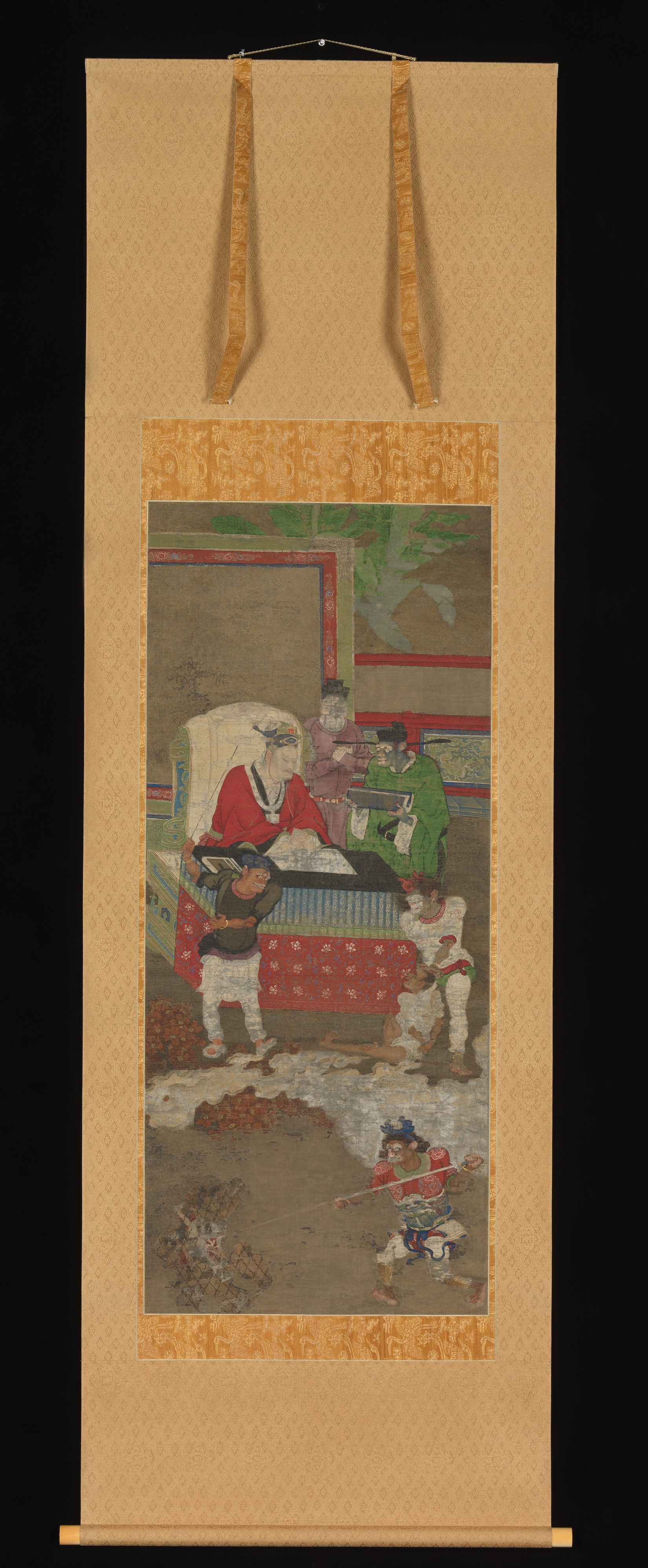Ten Kings of Hell
Jin Chushi Chinese
Not on view
This scroll is part of a set of ten illustrating the Ten Kings of Hell. The theme transforms the Indian Buddhist view of judgment after death into a Chinese bureaucratic process. Before being permitted to transmigrate into the next life, a soul is tried by a different king each week for seven weeks; it is sent to the eighth king on the hundredth day, to the ninth after a year, and to the tenth the third year after death. Each scroll shows a king—assisted by a scribe and other officials—examining and passing sentence on the souls of the dead. The foregrounds of each painting describe the types of violent punishments that might be expected in these treacherous realms. Many Buddhist paintings were created by professional artists working in Ningbo in China’s Zhejiang Province, an important port city for merchants and pilgrims traveling from Japan, where many such works are still preserved.
On view for rotation 2 only.
Due to rights restrictions, this image cannot be enlarged, viewed at full screen, or downloaded.
This artwork is meant to be viewed from right to left. Scroll left to view more.




